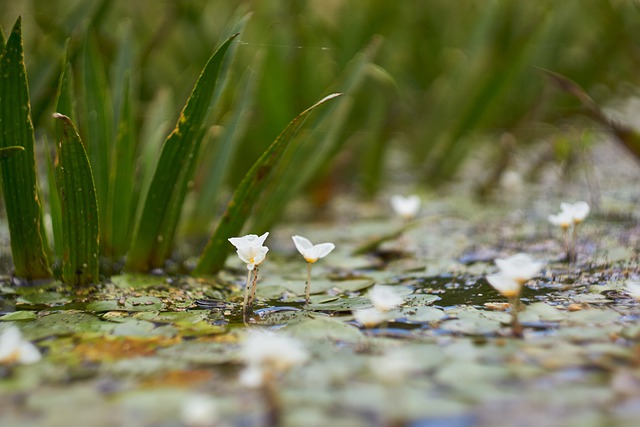 |  |  |  |  |
 |  |
Frogbit is a perennial, floating, dioecious plant. The stems are shortened with side shoots (stolons), on the tops of which the wintering buds were formed. The leaves are floating, arranged in a rosette, on long petioles, round-heart-shaped, 5-7 cm in diameter, with two large leaflets.
Flowers white, 1.5-2cm in diameter, with 3 broad inverted oval petals; male flowers solitary on long petioles, female in threes, sessile. Fruits are berry-like. Blooms in June-July.
For medicinal purposes, Frogbit are collected during flowering. Dry in a dry, well-ventilated place.
The leaves contain flavonoids, anthocyanins (cyanidin, pelargonidin), leucoanthocyanins (leucocyanidin).
Currently, the plant has been relatively little studied from a chemical point of view. The flavonoids contained in it have a sedative effect, as well as anthocyanins and leukoanthocyanins act as antioxidants.
There are reports that this plant accumulates radioisotopes in itself. Therefore, its collection and use is possible only in ecologically clean places.
Medicinal significance
This plant is used only in folk medicine and its main use is to create sedatives. They are used to treat insomnia and night dreams, painful erection (priapism), spermatorrhea, reduce excessive sexual excitability, excessive pollution and neurasthenia.
The anti-inflammatory properties of Frogbit are useful in the treatment of diseases of women, severe leucorrhoea, used to treat abrasions, effusions and other skin conditions that are accompanied by the risk of infection.
As we have already found out, the main effect of the plant is sedative. Preparations of the Frogbit speed up the braking processes in the over-excited cortex of the brain, reduce the feeling of anxiety and promote rapid falling asleep.
Preparations of the Frogbit relax the smooth muscles of the blood vessels, as a result of which the arterial blood pressure decreases.
